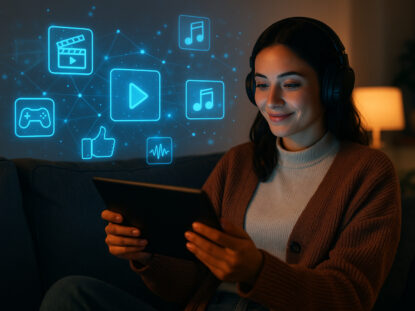For Generation Z — those born roughly between the late 1990s and early 2010s — entertainment is no longer a solitary experience. Unlike previous generations who watched movies and shows in isolation or with family, Gen Z has turned viewing into a shared social activity, even when watching alone. Through group chats, reaction videos, live streams, and watch parties, this generation has redefined how audiences connect with content and each other.
The Evolution of Social Viewing
In the past, television dictated when and how people watched. Today, streaming platforms and social media have democratized access, allowing viewers to watch anytime, anywhere — and with anyone. Platforms like Netflix and YouTube have integrated social features such as watch parties and live commenting, turning viewing into an interactive experience.
Apps like Discord and TikTok have taken this further, merging content consumption with real-time engagement. Watching a show is no longer just about the story — it’s about the community reaction.
Why Gen Z Prefers Shared Experiences
Gen Z grew up in the age of connectivity, valuing participation over passive viewing. Socialized viewing satisfies three key needs:
-
Connection: Sharing reactions through memes, clips, or live chats strengthens friendships and online identities.
-
Belonging: Joining fandoms or online watch parties creates a sense of inclusion and community.
-
Engagement: This generation wants to co-create — remixing content, posting reactions, and discussing plot twists as they unfold.
For Gen Z, entertainment isn’t consumed — it’s experienced collectively, often blending social media, pop culture, and self-expression.
The Rise of Co-Watching Platforms
The pandemic accelerated this shift, giving rise to platforms like Teleparty (formerly Netflix Party) and Scener, which allow synchronized streaming and chat features. Social apps such as Twitch and TikTok also encourage “duet” and “stitch” formats, letting users react to content collaboratively.
Even brands and studios are adapting — hosting virtual premieres, influencer live-streams, and fan engagement campaigns that tap into this communal energy.
The Cultural Impact
This transformation has reshaped how stories are told and marketed. Creators now design content with shareability in mind — shorter formats, cliffhangers, and emotional beats that trigger reactions or discussions. Viral moments from shows and movies often drive more viewership than traditional advertising.
Moreover, Gen Z’s socialized viewing habits are blurring the line between creator and audience. Every reaction post, live review, or meme adds to the cultural narrative, making audiences part of the storytelling process.
Conclusion
For Gen Z, watching is never just watching — it’s a conversation. Their socialized viewing habits reflect a deeper shift in how media is experienced: interactive, communal, and constantly evolving. As technology continues to merge entertainment with social interaction, one thing is certain — the future of watching is together, even when we’re apart.






